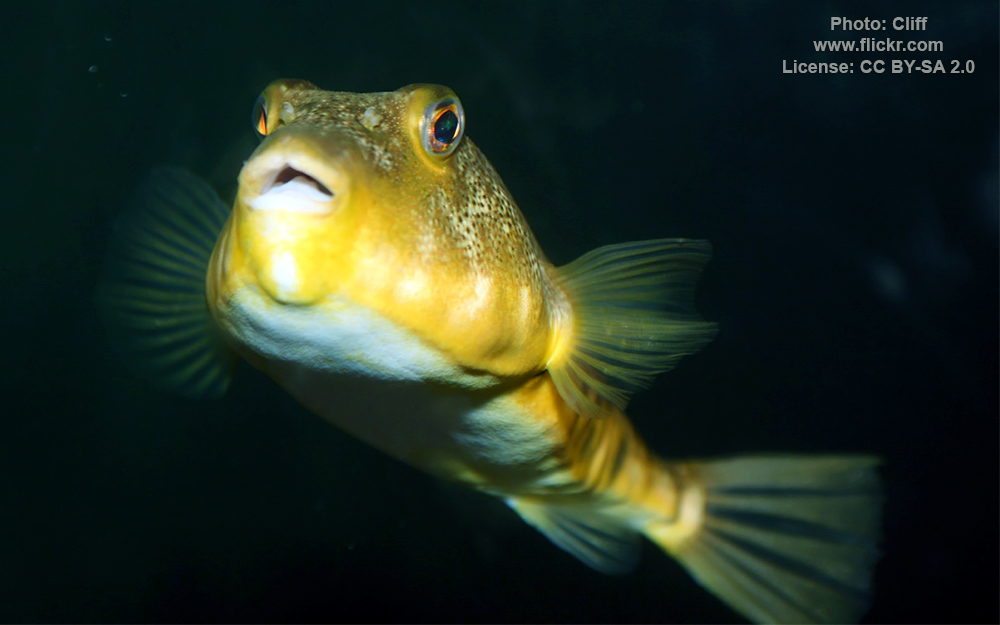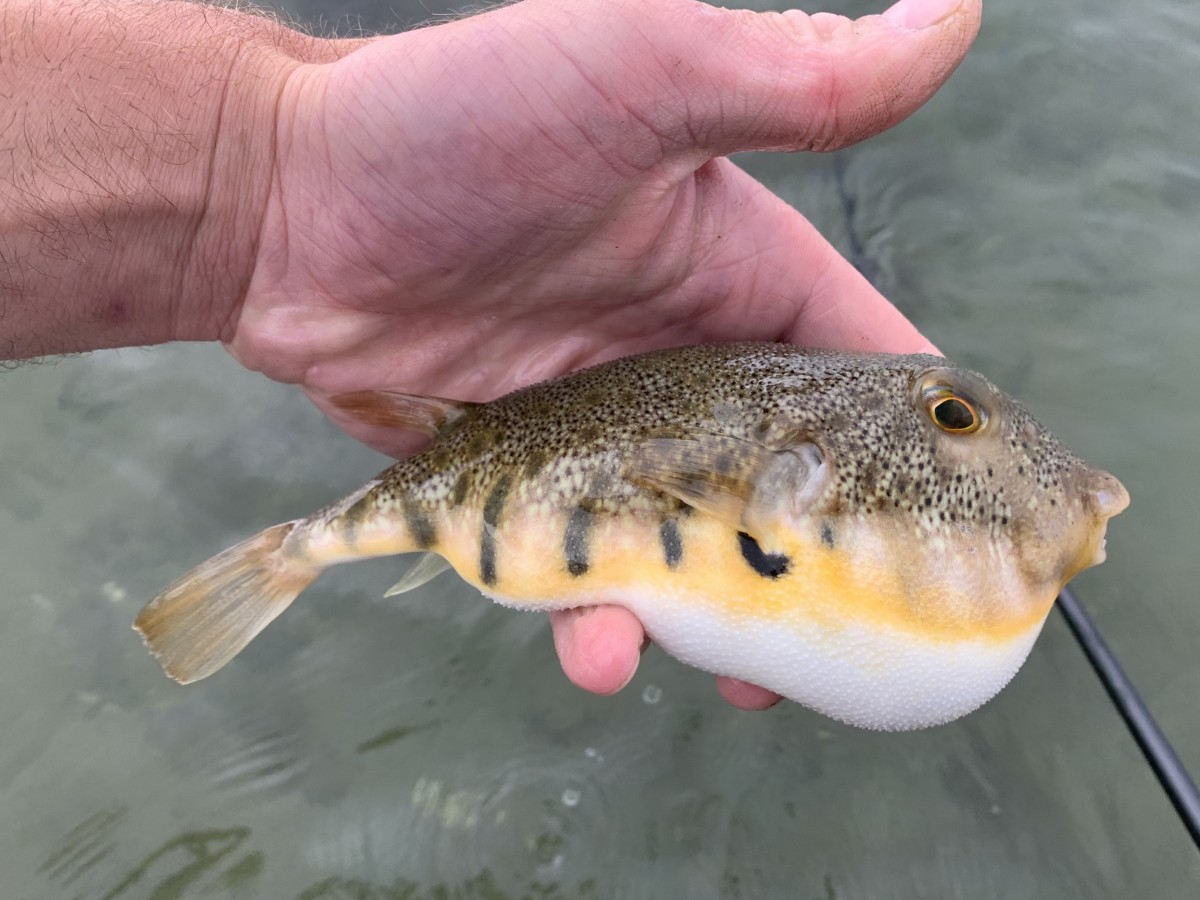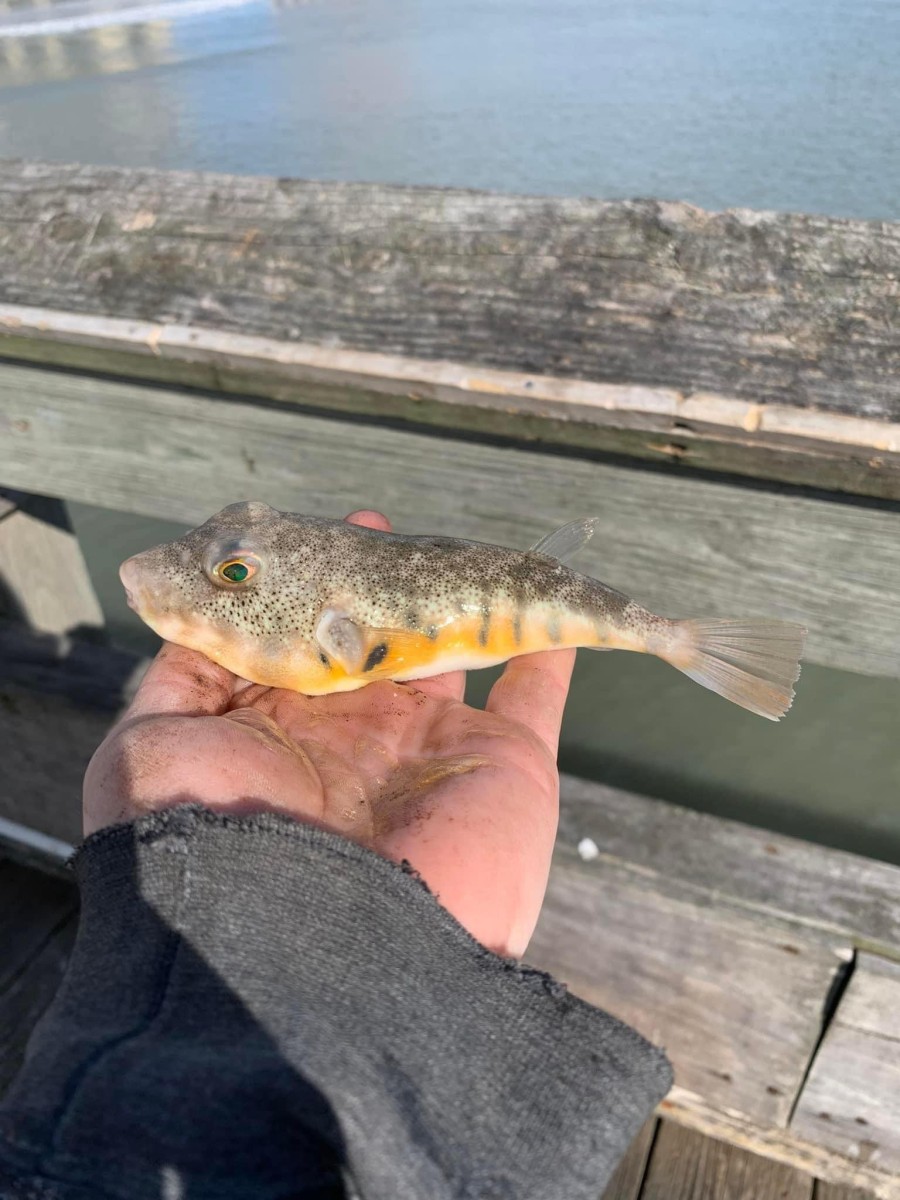Northern puffer
(Sphoeroides maculatus)

Image source: Cliff | flickr.com
Classification
General data
The northern puffer, Sphoeroides spheroides, is a species in the family Tetraodontidae, or pufferfishes, found along the Atlantic coast of North America.
Unlike many other pufferfish species, the flesh of the northern puffer is not poisonous, although its viscera can contain poison, and high concentrations of toxins have been observed in the skin of Floridian populations.
The northern puffer has the shape of a club. Adults have small spines covering the entire body with a tiny beak-like mouth. It is characterized by vertical stripes with a gray to brown dorsal surface and a yellow to white belly. It has tiny jet-black pepper spots (about 1 mm in diameter) scattered over most of pigmented surface, particularly evident on cheeks.
Lower sides of the body have a row of black, elongate, bar-like markings. A small dorsal fin is set far back near the tail.
Sphoeroides maculatus, like others in the puffer family, puffs up into a ball in self-defense by inhaling water into a special chamber near its stomach. They will puff up with air if taken out of the water.
The northern puffer reaches up to 36 cm (1 ft 2 in) in length, but is usually around 20 cm (8 in).












